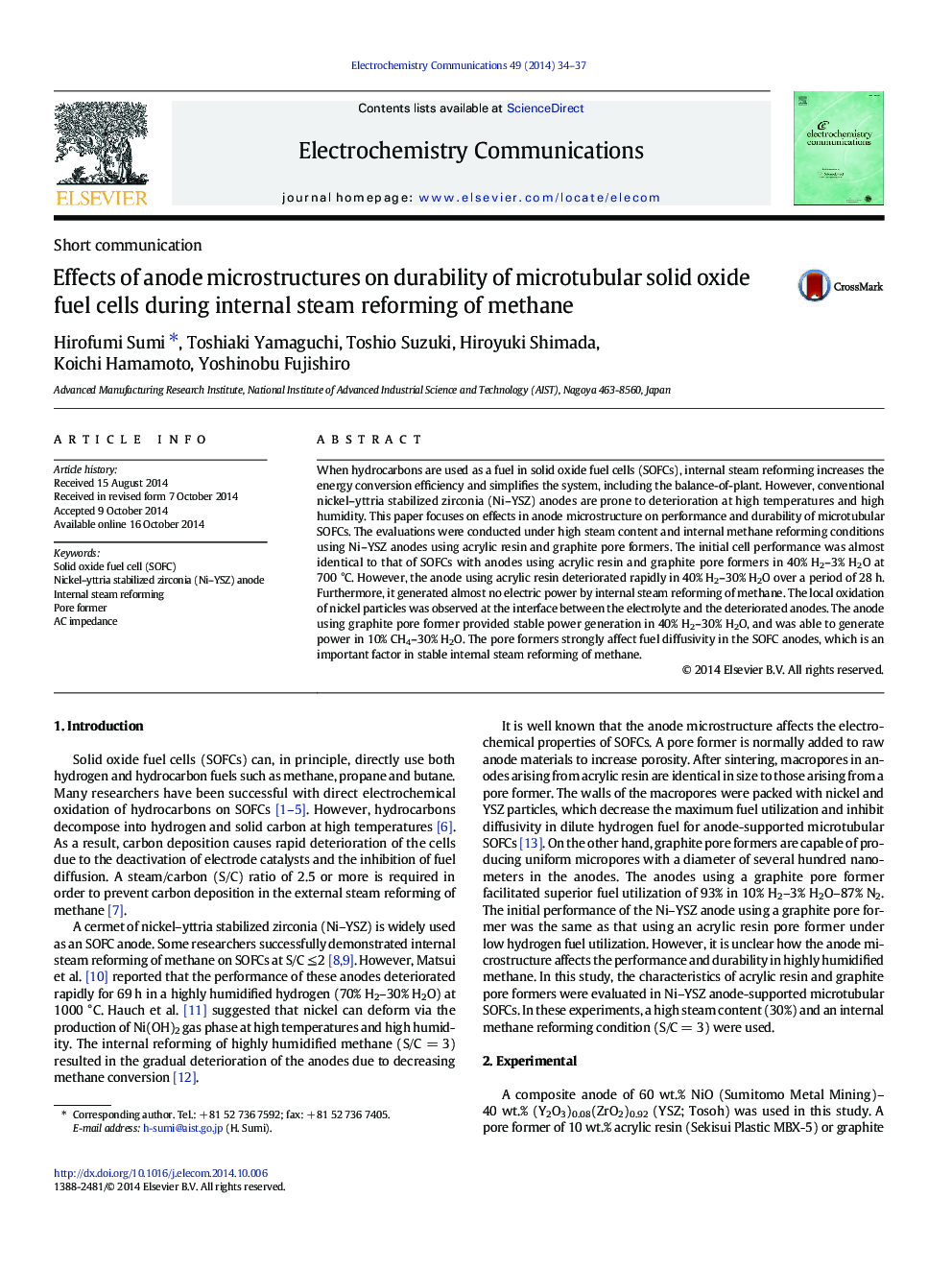| Article ID | Journal | Published Year | Pages | File Type |
|---|---|---|---|---|
| 6601326 | Electrochemistry Communications | 2014 | 4 Pages |
Abstract
When hydrocarbons are used as a fuel in solid oxide fuel cells (SOFCs), internal steam reforming increases the energy conversion efficiency and simplifies the system, including the balance-of-plant. However, conventional nickel-yttria stabilized zirconia (Ni-YSZ) anodes are prone to deterioration at high temperatures and high humidity. This paper focuses on effects in anode microstructure on performance and durability of microtubular SOFCs. The evaluations were conducted under high steam content and internal methane reforming conditions using Ni-YSZ anodes using acrylic resin and graphite pore formers. The initial cell performance was almost identical to that of SOFCs with anodes using acrylic resin and graphite pore formers in 40% H2-3% H2O at 700 °C. However, the anode using acrylic resin deteriorated rapidly in 40% H2-30% H2O over a period of 28 h. Furthermore, it generated almost no electric power by internal steam reforming of methane. The local oxidation of nickel particles was observed at the interface between the electrolyte and the deteriorated anodes. The anode using graphite pore former provided stable power generation in 40% H2-30% H2O, and was able to generate power in 10% CH4-30% H2O. The pore formers strongly affect fuel diffusivity in the SOFC anodes, which is an important factor in stable internal steam reforming of methane.
Related Topics
Physical Sciences and Engineering
Chemical Engineering
Chemical Engineering (General)
Authors
Hirofumi Sumi, Toshiaki Yamaguchi, Toshio Suzuki, Hiroyuki Shimada, Koichi Hamamoto, Yoshinobu Fujishiro,
